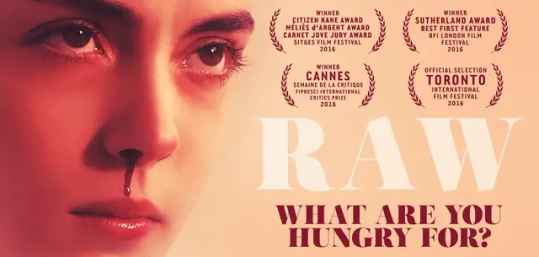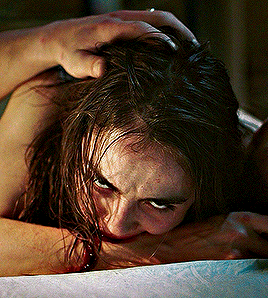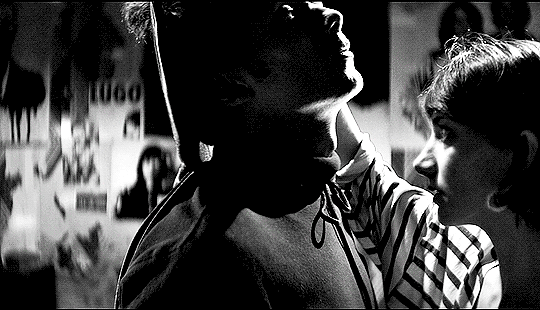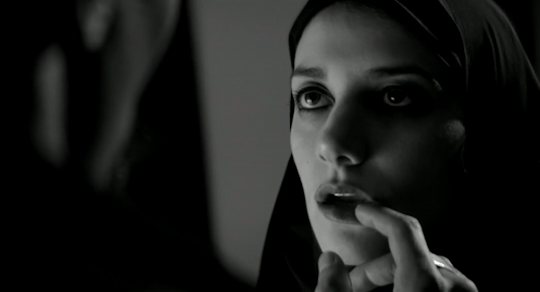#oxyfilmidentity-fa23
Text
Panel 1: Gender, Genre, and Excess
CONTENT WARNING: blood, gore

Raw (2017) written and directed by Julia Ducournau
youtube

"I’m fed up with the way young women and their discovery of sexuality is portrayed on screens ... For me, sexuality is in the body. And you should certainly not be a victim. It’s not something that you go through, it’s something that you are active in, and it’s perfectly okay. Your main aim should be to climax, because if it’s not your main aim, you’re never gonna climax. So, that’s what I wanted to show you: a sexuality that is not apologetic, shameless, in the body, in the now and aiming at climax."
- Julia Ducournau, British film Institute, 2017
"Masochistic pleasure for women has paradoxically seemed either too normal - too much normal yet intolerable condition of women - or too perverse to be taken seriously as pleasure."
- Linda Williams, "Film Bodies: Gender, Genre, and Excess," (1991)
Synopsis
Ducournau's Raw follows the demure, innocent young adult Justine as she begins her first year at a prestigious veterinary school, previously attended by her parents and currently attended by her older sister Alexia.

It is the school's tradition that all new students undergo a bizarre, humiliating hazing ritual. During this week-long ritual, Justine and her cohorts are forced to each eat a rabbit kidney. Justine, forcibly raised to be a strict vegetarian by her parents, refuses to eat the kidney until she is urged by her older sister.
youtube
After her first taste of meat, Justine begins to change. She develops a full-body rash and an insatiable taste for raw meat, which soon devolves into cannibalism.


What is particularly interesting about her newfound hunger, though, is its direct correlation to her sexual awakening.
Genre
Despite its highly graphic content and horrific themes, I personally categorize Raw as a film in the coming-of-age genre that simply uses elements of horror as a visual and multi-sensorial tool through which to further explore themes of sexual discovery.
This brings me back to the two quotes at the top. Ducournau argues that the prototypical narratives of the feminine sexual awakening in the coming-of-age film far too often simplify the true complexity of young women's desires. These stories often conflate sexual attraction (to men) to the desire to be sexually attracted to (by men), crafting the woman as an inherent victim and object of male desire even if she is allegedly the protagonist of a narrative. In Ducournau's cinematic vision, to portray the woman as the active subject of her sexual desire is to separate her desire from man's desire completely. In order to achieve this exploration of the distinct and uncomfortable realities of female sexuality, Ducournau chooses to represent sexual hunger through cannibalistic hunger.
Much of Williams' musings on the horror genre reflect most feminist film theorists' consensus that horror sees women as its common victims. While Williams offers a few retorts on the state of female agency in horror, she ultimately concedes that horror caters deeply to men's psychosexual pleasures, whether they be sadistic or masochistic. In the quote above, Williams addresses the improbability of women's sadomasochistic pleasures guiding the cinematic gaze. She very interestingly describes women's desires as "too normal" or "too perverse;" women's sexuality is, deep down, known by the patriarchy to exist, but is far too big a taboo to openly talk about.
In Raw, Ducournau brings these unspoken desires to the surface in the most disgusting, unavoidable way possible.
Gendered Bodies and Excess
Another content warning (sorry Prof!!!)

Rather than rely solely upon the male/female gaze to address the viewer within the narrative, Ducournau uses various bodily sensations to suture the viewer to the protagonist's perspective. This is referred to multi-sensory spectatorship, in which the on-screen body evokes a sensation in the body of the viewer.
For example:

youtube
This mirrors Williams' texts, in which she writes that "the body of the spectator is caught up in an almost involuntary mimicry of the emotion or sensation of the body on the screen along with the fact that the body displayed is female" (26). However, Justine in Raw does not just evoke feelings of fear, as Williams suggest women in horror typically do. Through a multi-sensory experience, Justine's sexual awakening addresses women viewers and invites them to welcome their sexual desires which have been deemed "too perverse."
She even addresses us by looking directly at the camera when the culminations of her cannibalism and sexual awakening meet:

Racialized Bodies and Excess
The film does not see Justine sexually engage with men until later into its narrative, when her sexual awakening has already been realized within her own terms. Here, Ducournau flips the hegemonic gaze and poses an objectification of men, with a particular scene of Justine gawking at men's topless, active bodies.
The most notable object of her sexual gaze is Adrien, her roommate. Adrien is ethnically ambiguous and the only non-white person in the main cast of the film. He identifies as gay early in the film, though he has sex with Justine and has an implied flirtation with her sister, causing his sexuality to also be ambiguous. As he is assigned Justine's roommate despite his being a male, their gender roles in relation to one another can also be considered ambiguous. This ambiguity deconstructs any binaries that would have helped us eaily define Justine's sexuality or sexual desire, but this results in the objectification of Adrien and his body.
It is also notable that Adrien is murdered for cannibalistic consumption, with his mutilated body one of the most graphic displays of the film. (not showing that here, you're welcome :D). This detail, along with Adrien's place as the film's only POC, still falls back on tropes of racial exploitation and excess as relating to the "Othered" body on screen.
Though Ducournau's film is quite remarkable in its methods of reversing and deconstructing the male gaze, its ironic objectification of men can get pretty hairy when the implications of racial objectification are not carefully considered.
Discussion Questions
(I hope the GIFs weren't too gross. Here's this:)

Do you agree with Ducournau's claim that young women's sexual awakenings in coming-of-age films are victimizing? What films can be described this way? Which ones can't?
Is the objectification of men the "solution"/rebuttal to the objectifying male gaze? Why or why not?
Why do you think cannibalism and sexual desire are often connected in horror films? Do you think this aspect of Raw is necessary to tell its story of female sexuality?
11 notes
·
View notes
Text
A Girl Walks Home Alone at Night Viewing Response

(this scene literally changed the trajectory of my life)
I love this film so much!!!!! I've watched it for a few MAC classes and done a good amount of projects on it, it's one of my favorite films of all time so please bear with me if I have a lot to say :).
To start, I have to say I don't wholly agree with Abdi and Calafell's interpretation of The Girl in their text. The authors describe the titular Girl as a "forlorn chador-wearing feminist-vampire-vigilante, attempting to rid the fictional world of Bad City ... from the violence of patriarchy" (358). It's not that this is a completely inaccurate description, per se, as The Girl inevitably disrupts the patriarchy (which I will of course get into later), and can be revered by women audiences as a sort of feminist icon. Within the world of the film, however, I think this description is a bit heavy-handed, overlooking the intricacies and nuances of her character and her motives.
I don't feel that The Girl is this untouchable vigilante figure who's acts are always for the sake of liberating women and dismantling the patriarchy, even if she does end up doing so. In fact, I think the most feminist and empowering thing about her is that she sometimes acts out of her own self interest and her desire to feel human love. I feel like girlboss feminism has created this "I don't need a man" mindset, but my favorite part of the film is that Amirpour dared to portray that badass women, too, can still desire to be loved.
Ok, now for some actual formal analysis.

What is so cool about this film is that Amirpour uses the form of cinema itself, and its masculine traditions, to display a disruption of the patriarchy. It's notable that The Girl does not appear for the first 20ish (?) minutes of the film. We are instead introduced to three male characters with stylistic influences of old Westerns as well as the works of James Dean, all trademarks of western masculinity. We might expect the film that follows to be Arash's face off against the nefarious Saeed, a sort of dick-measuring contest (for lack of better words lol) that we are all too used to in these kinds of films. When we first do meet The Girl, she is framed through the gaze of Saeed, an emobodied masculine force proven to be physically dangerous. While Saeed sees The Girl while in the car with Atti, Amirpour cleverly utilizes the constructions of the male gaze. The audience sees The Girl only as Saeed does: in the mirror, over his shoudler, then not at all. The same occurs when the two cross paths on the sidewalk moments later. At this point, The Girl is still on the periphery of a masculine narrative.
Then, Amirpour does something interesting. As The Girl enters Saeed's apartment, the cinematic gaze gradually shifts. The space is overwhelmingy, obnoxiously "masculine." As The Girl takes it all in with disgust, we begin to see how ridiculous this masculine aesthetic truly is. Still, she is alone and physically small within a space that might as well be masculinity itself, with a dangerous man and his predictably disgusting motives. As the two get closer, Amirpour really hones in on compositions of the male gaze. In the scene GIFed above, Saeed is above The Girl, emphasizing her physical size. Her face is in focus, presumably to show its seductive nature as he is seeing it.
Despite my qualms with the Abdi and Calafell reading, they had a point that really stood out to me, and that applies a lot here. They remark that The Girl's vampirism "allows her to fight patriarchy; however, she is still living within a patriarchal society in which her raced, classed, and gendered body is disciplined" (365). Amirpour plays with societal expectations of how The Girl and her body would typically be positioned in this moment. With Saeed looking down at her and placing his finger in her mouth, she appears disempowered. In an instant, all of these expectations are turned on their head. After biting off Saeed's finger, it is him that is now disempowered, whimpering on the floor. When he looks up at the girl, she is no longer seductively framed. Her face is covered in his blood and she looks terrifying. In this moment, the patriarchal narrative of the film has been disrupted. What follows is discordance, a cynical view of the world now through The Girl's gaze.
5 notes
·
View notes
Text
An Viewing Response

"In these moments, An is essentially a shrine to ‘slow food’, to time-won wisdoms, and to the traditions being lost to today’s hyper-capitalist, factory-model food industry" (Carew 50).
Naomi Kawase's An was an incredibly beautiful and uniquely immersive film, one that I really loved and haven't been able to shake from my mind since we viewed it. Even before its tear-jerker ending, I was struck by the film's dreamy cherry blossoms, its recognizably human characters, the prolonged, ASMR-like displays of cooking and baking.
Carew describes this talent of Kawase's as a "distinctly feminine" one, and, though I have yet to see the filmmaker's other works, I felt that this description really resonated with my perception of the film. But first, what exactly defines a "feminine" style of filmmaking? Is it a focus on women's stories and issues? Is it particularly emotionally-driven? Must it appeal primarily to a women audience? It is hard to define this description without falling back upon the constructed gender binary, but I feel that Kawase's An is "feminine" simply due to the fact that it provides a perspective on particular cultural norms that is alternative or subversive to the mainstream representations of them. In this film, I find that it is the normative attitudes towards food and the cultural practice of "respecting" elders or authority that Kawase challenges through her beautifully written characters.

As Carew highlights in the quote above, An connects food with its rich history and tradition. As generations change and pass by, so do practices of cooking and sharing food. Kawase seems to mourn the inevitable loss of food-based traditions with clever contrasts. For instance, the chattering girls in Sentaro's shop take for granted the treats they are given, juxtaposed by Wakana's appreciation even for the dorayaki that Sentaro deems insufficient to sell to customers. The tin of bulk bean paste that Sentaro haphazardly moves throughout his shop contrasts to the careful and incredibly slow process of making the same ingredient taught to him by Tokue. The slow pacing and specific, seemingly minute details provided to Sentaro and us, the viewer, during this recipe sequence create a reflective space, one that allows us to pull back and consider the history of the food we so ignorantly consume.
This bean paste-making scene also brought to light another theme at the heart of this film: the practice of respect in Japanese culture. In the dynamic and eventual friendship between Tokue and Sentaro, an elder and a boss, Kawase interrogates who should bear more respect and submission to whom, ultimately suggesting that respect is a matter of time, love, and care, rather than a practice of respectful language without considering its meaning or impact. Tokue directly addresses her boss's subconscious use of respectful language. While making bean paste, Sentaro offhandedly says things like "I'm sorry," causing Tokue to outright ask for what or why he is apologizing.
I read that Tokue's simple responses to Sentaro's automatic language reflect the mistreatment she has received throughout her life for her condition. Through showing, rather than telling, Kawase uses Tokue's past and present treatment to reveal a dark side to a society that emphasizes respecting one's elders. I find that Tokue's appreciation for nature, as if natural entities possess human feelings and histories, is also a remarkably beautiful reaction to her outcast position. After so many years of mistreatment and isolation, its as if Tokue realized the love and care she lacked from other humans existed already within the world around her.

1 note
·
View note